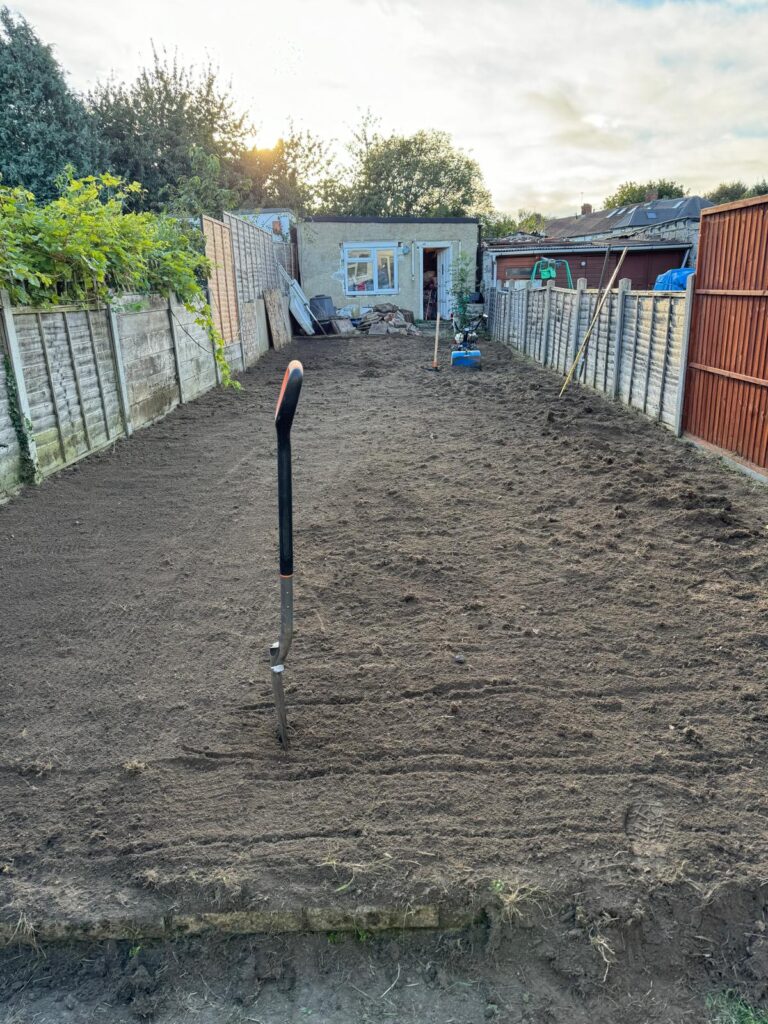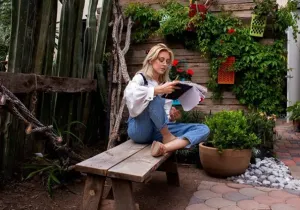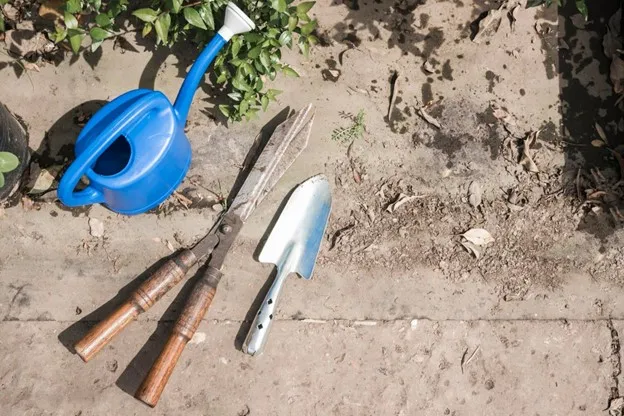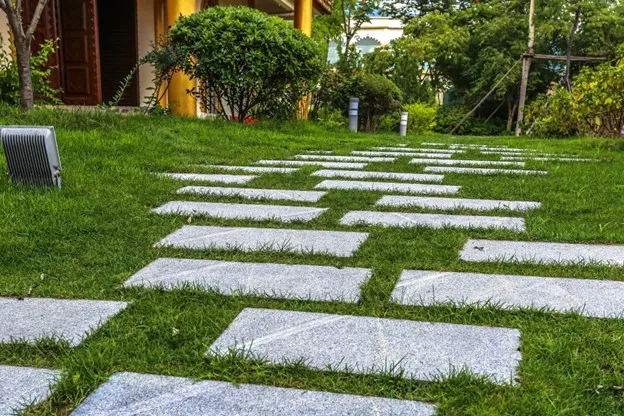Levelling is really important if you want to have a beautiful outdoor space. But it is not only about beauty. An uneven lawn will bring to your place a lot of problems, such as drainage issues. It will harm your plants and make your landscape look bad. When you create a flat lawn in your outdoor space, you ensure equal water distribution everywhere and prevent soil erosion.
Another reason to level your garden is that it will make your routine maintenance tasks easier. You will mow and plant without a problem, and your plants will be healthier. Levelling also prevents standing water. Standing water is a problem because it attracts pests and creates a great field for mould and mildew growth. If you want sheds, patios or walkways in your garden, levelling is also crucial.

Regardless of whether you are an experienced gardener or you’re just starting to get familiar with your garden space’s needs, levelling is one of the most important steps towards a more beautiful, healthy and functional garden. In this article, we will teach you how to do it and explain why it is so important.
How to level a garden and why is it important?
To level your garden means to create a flat and even surface across your outdoor area. The process involves fixing sloped garden areas, bumps, or dips in the terrain in order to achieve levelled garden soil. The main goal of levelling is to create smooth ground that can be a base for your plants, garden structures and upgrade the overall appearance of your outdoors.
A levelled garden will minimise the risk of soil erosion, it will make your outdoor space look more beautiful and appealing, it will help your plants grow healthier, and you will do your everyday maintenance garden tasks faster and easier.

Why should you level your garden?
Levelling is the most important step in your garden maintenance. It brings a lot of benefits and there are a lot of things that can go wrong if you don’t do it.
Here are the main reasons why you should level your garden:
- Improved water drainage
The uneven ground surface will cause your water to pool in certain areas and leave other areas completely dry. This harms the roots of your plants and exposes your soil to fungal growth. When your garden is levelled, the soil gets evenly wet, and you have better drainage, healthier plants and better-looking outdoor space. - Easier maintenance
The levelled garden is easier to maintain, and there are no two opinions about it. Regardless of whether it is mowing, keeping your plants healthy and growing, or creating beautiful grass seed areas, it is always better to do it on levelled soil. - Upgrades the look
Imagine a garden with steep slopes, bumps, uneven ground surface and water puddles all over it. Now imagine the same garden but levelled. Beautiful plants grow in the nutrient-rich soil; pathways pass in the middle of it, and everything looks generally better. Levelled garden upgrades your outdoor space. - Creates foundation for garden structures
If you want to install it in your garden pathways, patios, sheds, or other structures, the only way to do it efficiently is on a levelled surface. Levelled ground is a stable foundation for all the features you want to add to it. - Prevents soil erosion
An uneven garden is more vulnerable to soil erosion, especially if it is in an area where there is a lot of rainfall. Levelling your garden will help stabilise the soil and prevent the risk of erosion. - Plants grow healthier
Uneven gardens will create microclimates that are not suitable for plant growth. The plants in a levelled garden, on the other hand, will thrive and grow healthy. A levelled garden helps your water drainage, simplifies maintenance, supports the foundation of your garden structures and prevents soil erosion from occurring. It is an important step in your garden maintenance.
When Is the Best Time to Do It?
Like every other home remodelling or renovating task, levelling also needs careful planning and preparation. Timing is important in order to get the best results.
Here is a list of the best times to do your levelling:
- Early in the spring – It is one of the best times to level your garden due to the fact that the soil is usually moist and easy to work with.
- Late fall – After the growing season has ended, it is a great time to level. The soil is still workable, and when you level in the fall, you allow the ground to settle over the winter, which gives you a stable and even surface for spring planting.
- After heavy rainfall – It is effective because the soil is naturally loosened and easy to work with after heavy rain.
The best time to level your garden is early spring or late fall, but this doesn’t mean it is impossible to do it any time of the year. It would just be easier if you choose one of the options listed above.
How to Level Your Garden?

Regardless of whether you are preparing for a new lawn garden bed or you just want to improve your outdoor area, following our guide on how to level your garden will help you every step of the way.
Here are the steps you should take to level your garden efficiently:
- Assess the area
First, you must define the exact area that you will work on. Prepare it and make sure that there is nothing on it that will disrupt your levelling process. Remove all the dirt, rocks and debris and ensure a clean area that you can peacefully work on.
Gather Necessary Tools
You will need tools to execute the project properly.
Here is what you need:
- Shovel
- Rake
- Wheelbarrow
- Level
- Topsoil
Add topsoil or sand
If you notice that there are low spots in the area you are about to level, fill them up with topsoil or sand. Spread it evenly over using a shovel or garden rake.
- Level the soil
Use the rake again to level the soil surface. Focus on filling in the low spots and reducing high spots. In areas with significant slope, building a retaining wall is the solution.
- Compact the soil
After levelling, compact the soil to prevent settling. You can achieve this by walking over the soil or adding some water to it.
- Final raking
When your soil is ready and compacted, give it a final rake to smooth it out completely. When you’re ready for this step, your soil must be ready for planting.
- Recheck the level
Check again the level of the soil to be sure that it is even across the entire area. If there are any corrections necessary, make them before you start planting or laying sod.
- Planting or sodding
You can now proceed to the final step. If you are going to plant, laying turf is the best practice to achieve healthy soil for your plants.
By following these steps, you can be sure that the final result will be a beautiful and blooming garden.

What Should You Be Aware Before Beginning?
There are several key things you should be aware of before you start levelling. The first thing is to ensure you know the type of soil in your garden. Different soils require different approaches so it is important for you to know what kind is yours.
It is also important to check for any underground utilities, such as gas, water, or electrical lines, to avoid damaging them.
Conclusion
Levelling a garden is an essential part of your outdoor space upgrade process. Regardless of your goals and visions about your garden, levelling is the most important thing to do before you make any further improvements.



